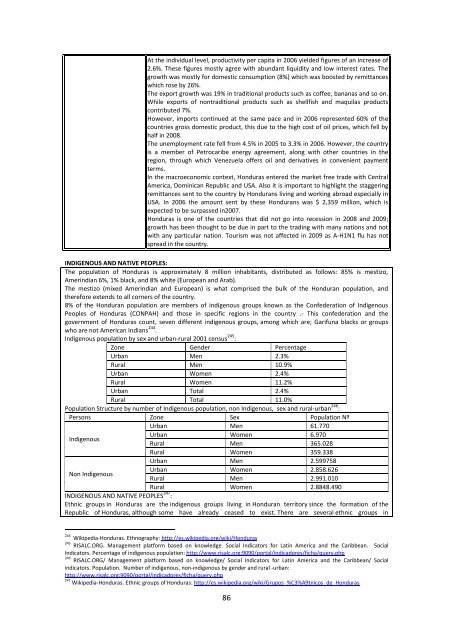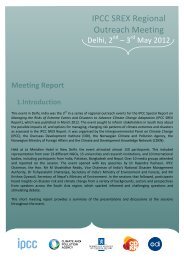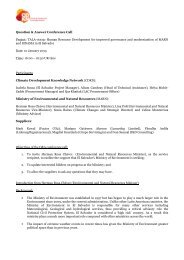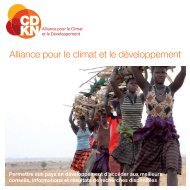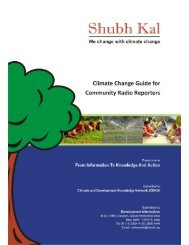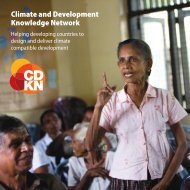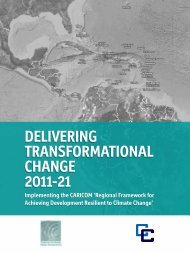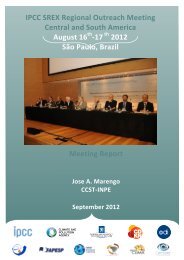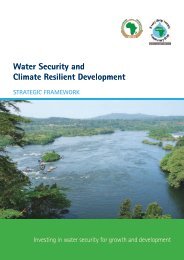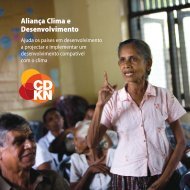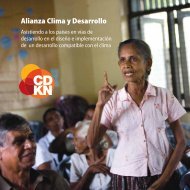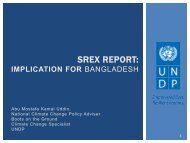At the individual level, productivity per capita in 2006 yielded figures of an increase of2.6%. These figures mostly agree with abundant liquidity and low interest rates. Thegrowth was mostly for domestic consumption (8%) which was boosted by remittanceswhich rose by 26%.The export growth was 19% in traditional products such as coffee, bananas and so on.While exports of nontraditional products such as shellfish and maquilas productscontributed 7%.However, imports continued at the same pace and in 2006 represented 60% of thecountries gross domestic product, this due to the high cost of oil prices, which fell byhalf in 2008.The unemployment rate fell from 4.5% in 2005 to 3.3% in 2006. However, the countryis a member of Petrocaribe energy agreement, along with other countries in theregion, through which Venezuela offers oil and derivatives in convenient paymentterms.In the macroeconomic context, Honduras entered the market free trade with CentralAmerica, Dominican Republic and USA. Also it is important to highlight the staggeringremittances sent to the country by Hondurans living and working abroad especially inUSA. In 2006 the amount sent by these Hondurans was $ 2,359 million, which isexpected to be surpassed in2007.Honduras is one of the countries that did not go into recession in 2008 and 2009;growth has been thought to be due in part to the trading with many nations and notwith any particular nation. Tourism was not affected in 2009 as A-H1N1 flu has notspread in the country.INDIGENOUS AND NATIVE PEOPLES:The population of Honduras is approximately 8 million inhabitants, distributed as follows: 85% is mestizo,Amerindian 6%, 1% black, and 8% white (European and Arab).The mestizo (mixed Amerindian and European) is what comprised the bulk of the Honduran population, andtherefore extends to all corners of the country.8% of the Honduran population are members of indigenous groups known as the Confederation of IndigenousPeoples of Honduras (CONPAH) and those in specific regions in the country .- This confederation and thegovernment of Honduras count, seven different indigenous groups, among which are; Garifuna blacks or groupswho are not American Indians 244 .Indigenous population by sex and urban-rural 2001 census 245 :Zone Gender PercentageUrban Men 2.3%Rural Men 10.9%Urban Women 2.4%Rural Women 11.2%Urban Total 2.4%Rural Total 11.0%Population Structure by number of Indigenous population, non Indigenous, sex and rural-urban 246 :Persons Zone Sex Population NºUrban Men 61.770IndigenousUrban Women 6.970Rural Men 365.028Rural Women 359.338Urban Men 2.599758Non IndigenousUrban Women 2.858.626Rural Men 2.991.010Rural Women 2.8848.490INDIGENOUS AND NATIVE PEOPLES 247 :Ethnic groups in Honduras are the indigenous groups living in Honduran territory since the formation of theRepublic of Honduras, although some have already ceased to exist. There are several ethnic groups in244 Wikipedia-Honduras. Ethnography: http://es.wikipedia.org/wiki/Honduras245 RISALC.ORG. Management platform based on knowledge. Social Indicators for Latin America and the Caribbean. SocialIndicators. Percentage of indigenous population: http://www.risalc.org:9090/portal/indicadores/ficha/query.php246 RISALC.ORG/ Management platform based on knowledge/ Social Indicators for Latin America and the Caribbean/ Socialindicators. Population. Number of indigenous, non-indigenous by gender and rural -urban:http://www.risalc.org:9090/portal/indicadores/ficha/query.php247 Wikipedia-Honduras. Ethnic groups of Honduras: http://es.wikipedia.org/wiki/Grupos_%C3%A9tnicos_de_Honduras86
Honduras, each has a different origin, and are the Lencas, Chortis, Garífunas, Islanders, Sumos, Tolupanes orXicaques, Pech or Payas, Misquitos.LENCAS:It is the largest group among the Indians of Honduras lives in the departments of Valle, Intibucá, Lempira andLa Paz, are grouped around the National Indigenous Lenca Organization of Honduras (ONIL). Lenca language hasdisappeared today.CHORTIS:A group of Mayan roots. They were already there before the Spanish arrived. Culturally and linguistically, relatedto the Chontal of Tabasco and with Chol of Chiapas are considered direct descendants of the Mayans andcousins Chol identified as ethnic group living in Chiapas, Mexico, Colombia. They now live in the Southwest nearthe border with Guatemala in the department of Copán and Ocotepque. Organized in ONICH (Organizationof Indigenous Chorti Honduras). They are considered the largest ethnic groups in Honduras patrilocal andpatrilineal.GARÍFUNABlacks descended from West Indian mixture of indigenous Caribbean Reds with slaves kidnappedfrom Africa, most of them live in the Bay Islands and the Atlantic coast of Honduras. They are the result of thefusion of African slave population (which foundered in 1655 and two other ships that sank in 1675) with CaribIndians (ameridians, who had different languages called Carib languages), and from them the BlackCaribs originated, who dominated the island St. Vincent until 1797, when they were expelled by theBritish to Roatán and Trujillo.They are organized in the Black Fraternal Organization of Honduras (OFRANEH).ISLANDERS / CREOLE:Known as the island's population is located in the Bay Islands and coast of Honduras. Brought from England andIreland when the pirates came to possess this land after the arrival of Christopher Columbus in 1502. Theirtongue is English Creole.PECHS o PAYAS:They call themselves "Pech" which means "People", a term that is used only to refer to them for the rest of thepopulation use the terms pech-akua (other people) or bulá which means Ladino. The Pech are located in thedepartments of Olancho, Colon and Gracias a Dios. They occupied the central region of the HonduranMosquitia and the northeastern department of Olancho. The Pech territory is very uneven and mountainous. It iscrossed by several major mountains that are branches of the Sierra Agalta, oriented from southwest tonortheast between the department of Olancho and Colón, and includes the mountains of El Boqueron, separatedby the valley of the Telica river and the mountains of El Carbón, of rivers Sico and Paulaya , separating themunicipalities of San Esteban and Culmí that give rise to rivers Paulaya and Wampu, as well as the tributaries ofthe Rio Sico.In the Rio Platano Biosphere, section of the Gracias a Dios department, there are small anddispersed Pech settlements communities along the middle of the river, between Las Marias and Waiknatara.In the community of Las Marias, where they are a minority, they have mixed with the Miskito and Garifuna, butthe eldest’s preserve part of their customs and speak their language.They are organized since 1987 in the Honduran Pech Indian Tribal Organization (FETRIPH).TOLUPANES o XICAQUES/JICAQUES:During the sixteenth century, the term Jicaque / Xicaque seems to have been used by Mexicans to refer to non-Mexican original inhabitants of Honduras; it was later applied more broadly to any non-converted or hostilegroup in the area to the south of Nicaragua and Costa Rica. The term Xicaque or Jicaque or, as at presentmoment this group is called, also have names like "tol", Tolupán, or torrupán. Currently in Honduras the termTolupán is used to define this ethnic group.While culturally, Tolupanes resembled the sumos, payas and Miskito, they differed from them linguistically.There is not in doubt, from the linguistic data, is that we find an ancient indigenous group previous to the Mayancivilization that knew, in the midst of the cultural transformation of the environment how to maintain someidentity until recent times.Amid all this ethnographic historical overview we can say is that the Tolupanes suffered in a special way the earlystages of the Spanish conquest in Honduras, characterized by a strong slave trade to the larger islands of theCaribbean and forced labor. The persecution was unleashed against them during colonization and forced themto take refuge in the jungles and mountains of the north central region of the country, remaining dispersed anddistant from the rest of society.Establishment of Tolupán population is approximately 19,300individualsTolupa current population and location are constituted in 28 tribes in six municipalities of the Yoro departmentspecifically the Montaña de la Flor, in the municipalities of Morazan, El Negrito, Victoria, Yorito, Yoro, Olanchitoand part of the department of Francisco Morazán, in the municipalities of Marale and Orica.Due to the location of the tribes in areas of difficult access in some cases, it is impossible to specify theinformation. Initially 21 tribes were known, but from the second half of the eighties, the FETRIXY Federation(Xicaques Tribes of Yoro) began conducting a survey in the area, that noted the existence of a good number of87
- Page 3 and 4:
Executive SummaryCentral America is
- Page 5 and 6:
Central is located in the "Ring of
- Page 7 and 8:
Study ContentAs an innovative theme
- Page 9 and 10:
that coexist in the universe. This
- Page 11 and 12:
Central America level, is the only
- Page 13 and 14:
of Mesoamerica has been explained a
- Page 15 and 16:
possesses effective cultural commun
- Page 17 and 18:
Additionally, to succeed and achiev
- Page 19 and 20:
eforestation, hydrological planning
- Page 21 and 22:
General thematic introduction on Cl
- Page 23 and 24:
Central American Governments should
- Page 25 and 26:
projected 109 conditions, changes o
- Page 27 and 28:
General introduction on the themati
- Page 29 and 30:
participatory manner, to address di
- Page 31 and 32:
Causes and complementary consequenc
- Page 33 and 34:
Organizational and legal contextWhi
- Page 35 and 36: The three bodies within the SICA ar
- Page 37 and 38: Based on research of available info
- Page 39 and 40: SE-CONREDCivilProtectionSNETCCNISCO
- Page 41 and 42: Synergy model that displays the add
- Page 43 and 44: Added value of indigenous and local
- Page 45 and 46: They do not work in a separate mann
- Page 47 and 48: demand for agricultural raw materia
- Page 49 and 50: Amazon DIPECHO Project “Strengthe
- Page 51 and 52: Indigenous Knowledge on DisasterMit
- Page 53 and 54: The combination of indigenous andsc
- Page 55 and 56: Indigenous Skills and the mysticism
- Page 57 and 58: Weather forecast through indigenous
- Page 59 and 60: In various international convention
- Page 61 and 62: Recommended ReadingBennett, A., 200
- Page 63 and 64: ILO, 1993, Convenio sobre pueblos i
- Page 65 and 66: Local knowledgeIncludes people and
- Page 67 and 68: which are threatswith a certainprob
- Page 69 and 70: Appreciates and respects their orga
- Page 71 and 72: framework, without taking into acco
- Page 73 and 74: Currently Cacaopera ethnicity, alth
- Page 75 and 76: IDH 228 For 2007 is of 0.6999Politi
- Page 77 and 78: The Mayangnas are people who are de
- Page 79 and 80: Rights of detainees to receive info
- Page 81 and 82: Heritage Protection Article 128The
- Page 83 and 84: 19/09/1996 Law no. 230 Amendments a
- Page 85: Indigenous Population:IDH 241 In 20
- Page 89 and 90: MISQUITOS 248 :In 1996 there were 3
- Page 91: Internationalconventions signed wit


